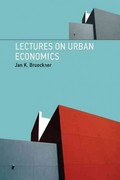Question
Suppose that workers commute to a Central Business District (CBD) in order to work every day. Suppose that initially the costs of commuting just depend
Suppose that workers commute to a Central Business District (CBD) in order to work every day. Suppose that initially the costs of commuting just depend on the amount of time required for the commute. A worker who earns a wage w can take public transportation, which takes 1 hour. Or they can drive a car, which takes 42 hours, where is the proportion of people who drive.
a) Tweedle-Dee is a commuter who will choose to drive only if the commute isn't too congested. What's the largest proportion of commuters who could drive () such that Tweedle-Dee will also decide to drive, rather than taking mass transit?
b) If Tweedle-Dee is exactly like every other commuter, then what proportion of commuters will drive (p)?
c) If a benevolent social planner could choose the value of which minimized total commuting costs, what would that proportion (call it ) be? How does this compare with p?
d) How could a scheme of tolls at the entrance to the CBD be used to achieve the cost-minimizing outcome of ? How large would the optimal toll be?
Step by Step Solution
There are 3 Steps involved in it
Step: 1

Get Instant Access to Expert-Tailored Solutions
See step-by-step solutions with expert insights and AI powered tools for academic success
Step: 2

Step: 3

Ace Your Homework with AI
Get the answers you need in no time with our AI-driven, step-by-step assistance
Get Started


